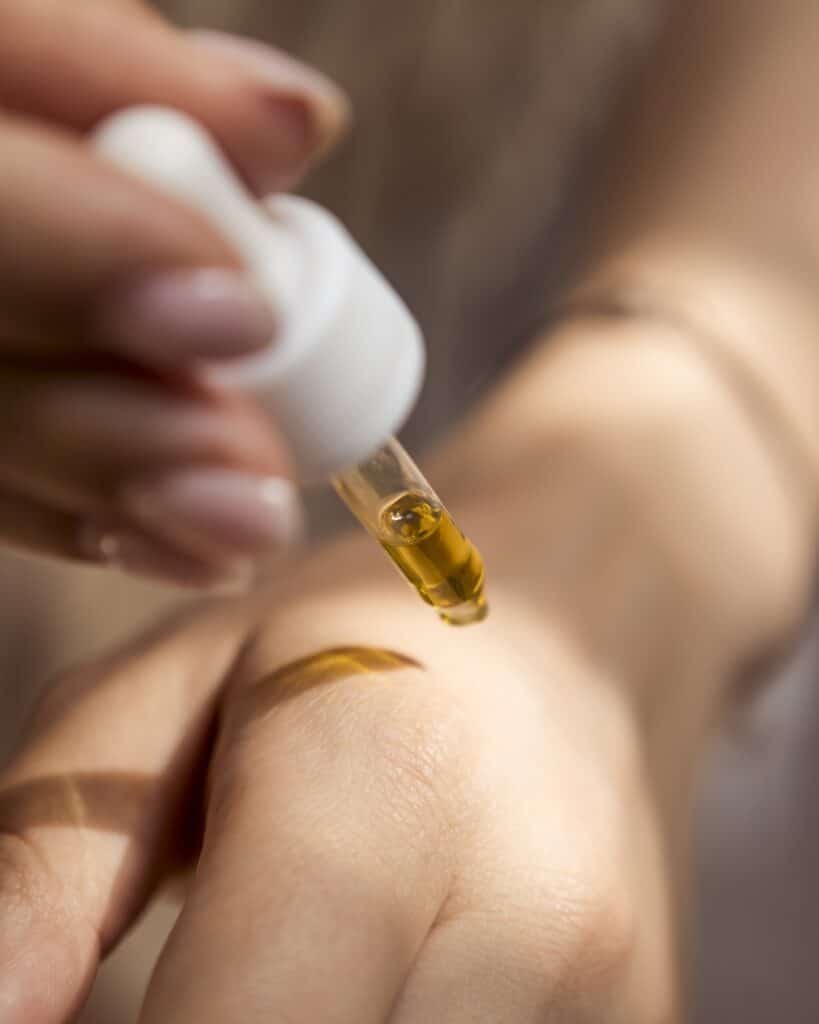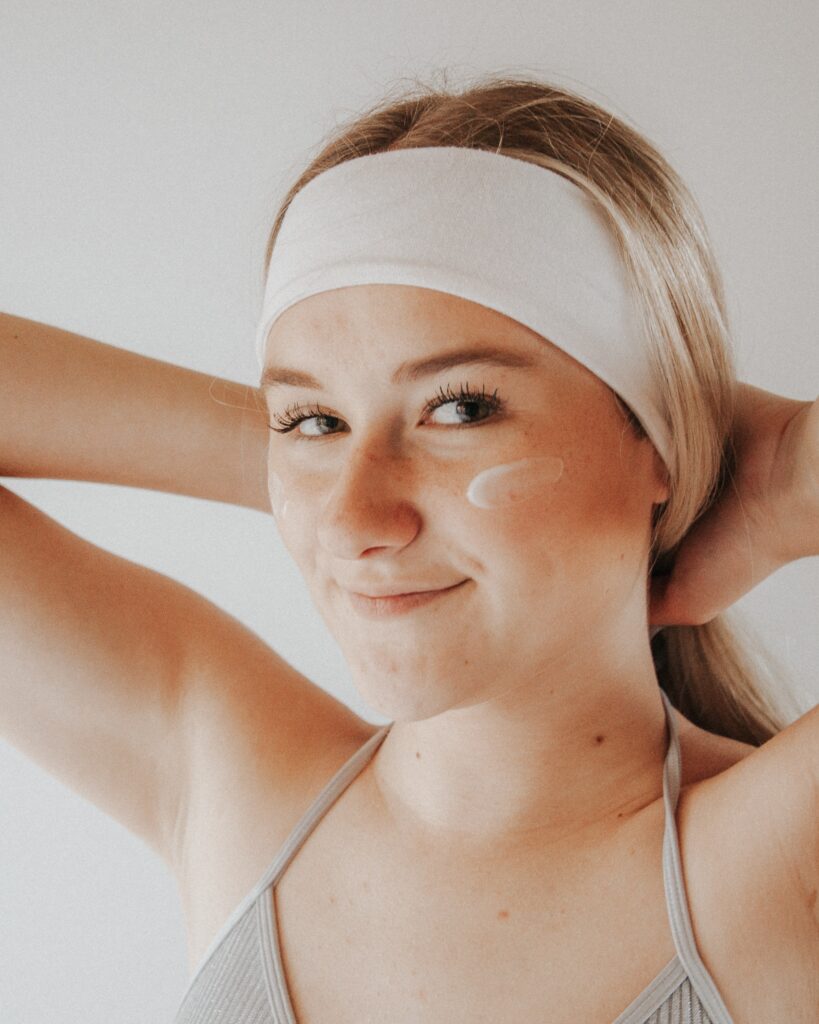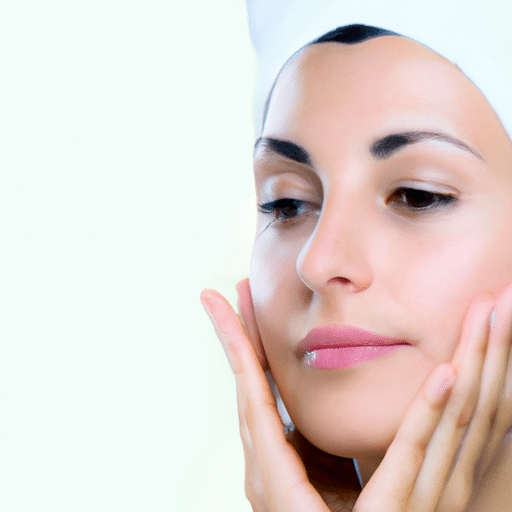Are you wondering how frequently you should schedule facials to achieve the best possible results for your skin? Look no further! In this article, we will explore the ideal frequency for facials and provide you with some valuable insights. Whether you have a specific skin concern or you simply want to maintain a healthy and glowing complexion, finding the right balance is key. So, let’s dive in and discover how often you should indulge in this rejuvenating skincare treatment to achieve optimal results.

This image is property of images.unsplash.com.
Understanding facial treatments
What is a facial?
A facial is a skincare treatment that focuses on improving the health and appearance of the face. It involves various techniques and products to cleanse, exfoliate, nourish, and rejuvenate the skin. Facials are typically performed by licensed estheticians and can be done at home or by professionals at a spa or skincare clinic.
Different types of facial treatments
Facial treatments can vary depending on the specific needs and concerns of an individual’s skin. Here are some common types of facial treatments:
-
Deep-cleansing facial: This type of facial focuses on removing impurities and unclogging pores. It typically includes thorough cleansing, exfoliation, and extractions to eliminate blackheads and whiteheads.
-
Hydrating facial: A hydrating facial is designed to replenish moisture in the skin, making it ideal for dry or dehydrated skin types. It often involves the use of hydrating masks and serums to restore the skin’s natural moisture balance.
-
Anti-aging facial: As the name suggests, this facial targets signs of aging such as wrinkles, fine lines, and loss of elasticity. Anti-aging facials often incorporate specialized products and techniques like facial massage and collagen-boosting treatments to promote a more youthful appearance.
-
Acne-clearing facial: This type of facial focuses on clearing and preventing acne breakouts. It typically includes deep cleansing, exfoliation, and the use of products with acne-fighting ingredients like salicylic acid or benzoyl peroxide.
Benefits of regular facials
Regular facials offer a multitude of benefits for the skin. Here are some key advantages of incorporating facials into your skincare routine:
-
Deep cleansing: Facials help to thoroughly cleanse the skin, removing dirt, oil, and impurities that can lead to breakouts and dullness.
-
Improved complexion: By exfoliating dead skin cells and promoting cell turnover, facials can help reveal a fresh, radiant complexion.
-
Hydration and nourishment: Many facial treatments focus on providing moisture and nourishment to the skin, resulting in a more hydrated, plump, and healthy-looking complexion.
-
Relaxation and stress relief: Facials offer a pampering experience that can help alleviate stress and promote relaxation, benefiting both the mind and the skin.
Factors to consider for optimal results
Skin type and condition
When determining the frequency of facials, it is crucial to consider your skin type and current skin condition. Different skin types have varying needs and sensitivities, which should be taken into account when deciding how often to get a facial.
For example, individuals with oily or acne-prone skin may benefit from more frequent facials (e.g., every 2-3 weeks) to effectively manage excess oil and prevent breakouts. On the other hand, those with dry or sensitive skin may opt for less frequent facials (e.g., once a month) to avoid overstimulation and potential irritation.
Age and lifestyle
Age and lifestyle factors can also influence how often you should get a facial. As we age, our skin undergoes changes, such as decreased collagen production and slower cell turnover. Regular facials can help address these changes and promote a more youthful appearance.
Additionally, factors like sun exposure, environmental pollutants, and stress can impact the health and appearance of your skin. If you have a lifestyle that exposes you to these factors frequently, you may benefit from more regular facials to counteract their effects.
Budget and time constraints
While regular facials can be beneficial, it is essential to consider your budget and time constraints. Professional facials can range in price, and the frequency of your treatments should align with your budgetary restrictions.
Moreover, busy schedules can make it challenging to commit to frequent facial appointments. In such cases, where time is limited, establishing an effective at-home skincare routine can be a more practical solution to maintain the health and appearance of your skin.

This image is property of images.unsplash.com.
General guidelines for frequency
Professional recommendations
Consulting with a skincare professional is highly recommended to determine the optimal frequency of facials for your specific needs. A licensed esthetician or dermatologist can assess your skin and provide personalized advice on how often you should get a facial.
Frequency for different skin types
Here are some general guidelines for facial frequency based on different skin types:
-
Normal/combination skin: Individuals with normal or combination skin can typically benefit from getting a facial once every 4-6 weeks.
-
Oily/acne-prone skin: If you have oily or acne-prone skin, more frequent facials (every 2-3 weeks) may be necessary to effectively manage oil production and keep breakouts under control.
-
Dry/sensitive skin: Those with dry or sensitive skin may opt for less frequent facials (once a month) to prevent overstimulation and potential irritation.
Frequency for different age groups
The frequency of facials can also vary based on age. Here are some guidelines for different age groups:
-
Teenagers: Teenagers with acne-prone skin may benefit from bi-weekly or monthly facials to help manage breakouts and establish a good skincare routine.
-
20s-30s: Young adults in their 20s and 30s can generally aim for facials every 4-6 weeks to maintain healthy, glowing skin and address any specific concerns.
-
40s and beyond: As we age, our skin requires more maintenance and care to combat signs of aging. In the 40s and beyond, getting a facial every 3-4 weeks can help address fine lines, wrinkles, and skin laxity.
Specific facial concerns
Acne-prone or congested skin
For individuals with acne-prone or congested skin, regular facials can play a vital role in managing breakouts and promoting clearer skin. Deep-cleansing facials that include thorough exfoliation and extractions are typically recommended for acne-prone skin.
The frequency of facials for acne-prone skin may vary based on the severity of the condition. Consulting with a professional esthetician can help determine the appropriate frequency, whether it’s bi-weekly or once a month, to effectively address the specific needs of the skin.
Dry or dehydrated skin
Facials can be incredibly beneficial for individuals with dry or dehydrated skin, as they focus on restoring moisture and improving the skin’s hydration levels. Hydrating facials that incorporate nourishing masks and serums can help replenish the skin’s natural moisture barrier.
For dry or dehydrated skin, receiving a facial once a month is generally recommended. This frequency allows for adequate time for the skin to heal and regenerate between treatments while ensuring consistent hydration.
Mature or aging skin
As we age, our skin undergoes various changes, including a decrease in collagen production and elasticity. Regular facial treatments can help combat these signs of aging and promote a more youthful appearance.
Anti-aging facials that incorporate techniques like facial massage and collagen-boosting treatments are often recommended for mature or aging skin. Depending on the specific concerns, individuals in this age group may benefit from facials every 3-4 weeks to maintain optimal results.
Sensitive or rosacea-prone skin
Individuals with sensitive or rosacea-prone skin require gentle and soothing facial treatments to avoid exacerbating their condition. Facials that focus on calming and strengthening the skin’s barrier function can help manage sensitivity and reduce redness.
For sensitive or rosacea-prone skin, it is advisable to receive facials once every 4-6 weeks. This frequency allows for adequate healing time between treatments and minimizes the risk of irritation.

This image is property of images.unsplash.com.
At-home facial care
Importance of daily skincare routine
In addition to regular professional facials, establishing a consistent at-home skincare routine is crucial for maintaining the health and appearance of your skin. A daily skincare routine should include cleansing, exfoliating, toning, moisturizing, and applying broad-spectrum sunscreen.
By following a proper skincare regimen, you can ensure that your skin remains clean, hydrated, and protected from environmental stressors on a day-to-day basis. Consistency and using suitable products for your skin type are key to achieving optimal results.
Choosing the right products
When it comes to at-home facials, selecting the right products for your skin type and concerns is essential. Look for gentle cleansers, exfoliants, moisturizers, and serums that are formulated to address your specific needs.
If you’re unsure about which products to use, consulting with a skincare professional can help guide you in choosing the most suitable products for your skin.
Frequency of at-home facials
At-home facials can be a great addition to your skincare routine between professional treatments. However, the frequency of at-home facials should be adjusted based on your skin’s tolerance and needs.
For most individuals, performing an at-home facial once or twice a week is sufficient. This can involve cleansing, exfoliating, applying a mask, and finishing with moisturizer and sunscreen. However, if you have more sensitive or reactive skin, it may be best to limit at-home facials to once every two weeks or less to avoid overstimulation.
DIY facial techniques
In addition to using specialized skincare products, there are several DIY facial techniques you can incorporate into your routine to enhance the effectiveness of your at-home facials. Here are a few suggestions:
-
Facial massage: Gently massaging your face in upward motions can help improve blood circulation, lymphatic drainage, and product absorption. Use your fingertips or a facial roller for added benefits.
-
Steam facial: Steaming your face before applying a mask or exfoliating can help open up the pores and enhance the penetration of active ingredients. You can use a facial steamer or simply hold your face over a bowl of warm water with a towel draped over your head.
-
Face masks: Applying a face mask after cleansing and exfoliating can provide additional benefits depending on the specific mask you use. Look for masks that target your skin concerns, whether it’s hydration, brightening, or purifying.
Professional facial treatments
Types of professional facials
There are various types of professional facials available to address specific skin concerns and provide specialized treatments. Some common types of professional facials include:
-
Microdermabrasion: This facial treatment involves the use of a machine that gently exfoliates the skin, removing dead skin cells and promoting a smoother complexion.
-
Chemical peels: Chemical peels involve the application of a chemical solution to the skin to exfoliate and resurface the skin’s outer layers. They can be customized based on the specific concerns and desired results.
-
LED therapy: LED (light-emitting diode) therapy utilizes different wavelengths of light to target various skin concerns such as acne, inflammation, and signs of aging.
-
Oxygen facial: This facial treatment delivers oxygen and specialized serums to the skin using a pressurized device. It helps hydrate the skin, promote cell regeneration, and improve overall skin health.
Benefits of seeking professional treatments
While at-home facials are beneficial, professional facial treatments offer unique advantages. Here are some benefits of seeking professional facials:
-
Expert assessment: Skincare professionals have a trained eye and knowledge of different skin types and conditions. They can assess your skin’s needs and recommend the most appropriate treatments and products.
-
Advanced techniques and equipment: Professional facials often involve advanced techniques and specialized equipment that may not be available or as effective in an at-home setting. This allows for more targeted and comprehensive treatment of specific concerns.
-
Customization: Estheticians can tailor professional facials to address your individual concerns, whether it’s acne, aging, or sensitivity. They can select products and techniques that are best suited for your skin type and condition.
-
Relaxation and self-care: Professional facials offer a spa-like experience that allows you to relax, unwind, and indulge in self-care. The soothing environment and expert touch can enhance the overall experience and promote a sense of well-being.
Recommended frequency for professional facials
The frequency of professional facials can vary depending on the individual’s needs and concerns. For most individuals, scheduling a professional facial once a month is a good starting point to maintain healthy skin and address specific concerns.
However, if you have specific skin issues that require more intensive treatments or if you are preparing for a special event, you may benefit from more frequent professional facials. Discussing your goals and concerns with a skincare professional will help determine the optimal frequency of professional treatments for your unique situation.

Maintaining results between facials
Proper skincare after a facial
After receiving a facial, it is important to follow the proper skincare routine to maintain the results and promote skin health. Here are some post-facial skincare tips:
-
Gentle cleansing: Use a gentle, non-irritating cleanser to remove any residual products or debris from the skin. Avoid harsh scrubbing or using hot water, as it can strip the skin of its natural oils.
-
Moisturize: Apply moisturizer to hydrate and nourish the skin. Look for moisturizers that are suitable for your skin type and contain ingredients like hyaluronic acid or ceramides to promote hydration and skin barrier function.
-
Sunscreen: Apply a broad-spectrum sunscreen with a minimum SPF of 30 to protect your skin from harmful UV rays. This is especially important after a facial, as some treatments can increase sun sensitivity.
Using recommended products
After a professional facial, your esthetician may recommend specific products to use at home to maintain and enhance the results of the treatment. These products are often selected based on your skin type, concerns, and the specific ingredients used during the facial.
It is important to follow your esthetician’s recommendations and incorporate the recommended products into your daily skincare routine. Using these products consistently will help maximize the benefits of the facial and ensure long-lasting results.
Protecting the skin from environmental factors
In addition to following a proper skincare routine, it is crucial to protect your skin from environmental factors that can contribute to skin damage and premature aging. Here are some tips to safeguard your skin:
-
Wear sunscreen daily: Apply sunscreen with a minimum SPF of 30 every day, even on cloudy or rainy days. This will protect your skin from harmful UVA and UVB rays that can cause sunburns and accelerate skin aging.
-
Limit sun exposure: Seek shade, wear a wide-brimmed hat, and use protective clothing to minimize direct sun exposure, especially during peak hours when the sun’s rays are strongest.
-
Hydrate and moisturize: Keep your skin hydrated by drinking enough water throughout the day and using hydrating skincare products. This helps maintain the skin’s moisture levels and protects it from drying out.
-
Avoid smoking and excessive alcohol consumption: Smoking and excessive alcohol consumption can have detrimental effects on the skin, leading to premature aging, wrinkles, and skin discoloration. Avoiding these habits can contribute to healthier and more youthful-looking skin.
Adjusting frequency based on results
Monitoring the skin’s response
It is essential to pay attention to how your skin responds to regular facials and adjust the frequency accordingly. While regular facials can yield positive results, certain skin conditions or sensitivities may require a different approach.
If you notice any adverse reactions, such as increased redness, irritation, or breakouts, it may be a sign that the frequency of your facials needs to be adjusted. Communicating with your esthetician or dermatologist regarding these concerns will help determine the best course of action.
Consulting with a skincare professional
If you are uncertain about the optimal frequency of facials for your skin, consulting with a skincare professional is highly recommended. They can assess your skin’s needs, goals, and any specific concerns you may have.
A skincare professional can provide personalized advice and recommendations based on your individual circumstances, which will help you determine the ideal frequency of facials for optimal results.
Gradually increasing or decreasing frequency
As your skin changes and adapts to regular facials, it may be necessary to adjust the frequency over time. For example, if you have been receiving facials every two weeks and notice that your skin is consistently improving, you may consider gradually reducing the frequency to once a month.
Conversely, if you feel that your skin could benefit from more intensive treatment, such as addressing stubborn acne or hyperpigmentation, gradually increasing the frequency of your facials under the guidance of a skincare professional can be beneficial.

Facial treatments for special occasions
Preparing for a special event
Facials can be a great way to prep the skin for a special event or occasion. Whether it’s a wedding, party, or important presentation, a facial can help you achieve a radiant and glowing complexion.
To ensure optimal results for your special event, schedule your facial treatment at least a week or two in advance. This timeframe allows your skin to recover from any potential redness or mild peeling that may occur after certain facial treatments.
Suitable facial treatments
When preparing for a special event, consider the specific goals and concerns you have for your skin. Discussing your needs with a skincare professional can help determine the most suitable facial treatments.
Some popular facial treatments for special occasions include hydrating facials to achieve a plump and dewy complexion, microdermabrasion or chemical peels to improve skin texture and tone, or LED therapy to reduce inflammation and calm the skin.
Timing and scheduling
Timing is crucial when scheduling a facial for a special event. It is recommended to get a facial at least one week prior to the event to allow for any potential redness, sensitivity, or temporary skin purging to subside.
Avoid getting a facial too close to the event, as some treatments may cause temporary dryness or flakiness. It is also important to avoid trying any new skincare products or introducing a complex new skincare routine right before your event.
Conclusion
Facials are an essential part of a comprehensive skincare routine, providing numerous benefits for the health and appearance of your skin. By understanding the different types of facial treatments, considering factors like skin type and condition, and following general guidelines for frequency, you can ensure optimal results.
Whether you choose to incorporate regular professional facials or supplement them with at-home care, understanding your specific skin concerns and consulting with skincare professionals will help you tailor a skincare routine that suits your needs.
Remember to adjust the frequency of your facials based on your skin’s response, consult with professionals when necessary, and maintain a consistent skincare routine to enjoy healthy, glowing skin for years to come.

